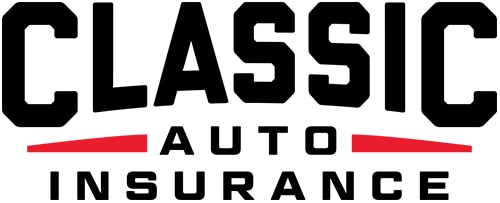As insurance agents, we see plenty of avoidable mistakes that wreck beautiful classic cars and their engines. Many of these mistakes are perpetuated by decades-old myths about auto care.
We’re here to set the record straight and help you preserve the vehicle you love. Below are some of the most common, easily avoidable mistakes that can destroy your classic auto.
#1 – Starting the Engine for Maintenance in Winter
It’s common practice for classic auto owners in low-temperature regions to cold start their engines weekly during the winter months. They let their hibernating classics run for a few minutes in order to keep the engine functioning.
However, this will cause moisture, fuel dilution and blow-by inside the crankcase. It’s also not long enough to warm the engine. Cold starting can cause severe damage to many vehicle components, including:
- Alternators.
- Batteries.
- Cylinder rods.
- Heads.
- Pistons.
- Starters.
Alternatively, Bell Performance recommends a cheap engine heater. This device connects to your radiator, prevents engine damage and keeps your car starting in below-zero temperatures.
Cold starting is also the source of the myth that you must replace the oil after winter storage. Your oil will last up to six months in storage unless you’re starting your engine every week (in which case you’ll have to change it immediately after storage if you don’t want to damage your engine).
#2 – Forgetting to Replace the Fuel Lines
Forgetting to replace the fuel lines is one of the most commonly missed steps in the classic auto restoration process, and the results can be devastating if you’re not careful. The fuel line (also known as the fuel hose) is a pipe made of metal, rubber or plastic that connects the gas tank to the fuel pump.
Old lines are often broken or cracked, leading to gas leaks and problems with fuel delivery. If you smell gas vapors or constantly see leaked fuel beneath your car, it’s almost certainly the result of a bad fuel line. As you might guess, this is a fire hazard and we see too many classic autos ruined as a result. Gas vapors are also a carbon-monoxide hazard and can cause you to feel sick.
Fortunately, replacing a fuel line isn’t hard with the right tools and proper mechanical knowledge. If you haven’t taken this step yet, it may be worth looking into.
#3 – Running on Empty
A completely full gas tank will protect the life of your fuel, making it especially important to keep your tank full if you’re storing it for the winter. Keeping the tank empty will ruin the little fuel you do have in the tank.
Additionally, most fuel pumps keep from overheating by staying submerged in the fuel tank. When the tank is less than a quarter full, it can overheat, and the replacement fuel pump will cost you a lot more than the three-fourths of a tank of gas that would’ve saved its life.
#4 – Using the Shifter as a Handrest
We get it. You’ve been on the road for a bit, you’re relaxed behind the wheel and you start to drive using a single hand. The gearshift seemingly makes a perfect hand rest.
However, believe it or not, the simple weight of your hand on the gearshift is enough to cause problems with transmission components over time. Using the gearshift as a handrest can strain the transmission bushings and synchronizers, wearing them down faster than is natural.
Besides, safety always should come first, and driving with both hands on the wheel allows you to make sudden steering maneuvers in the case of unexpected obstacles.
#5 – Abusing the Clutch
This is probably the most common mistake manual transmission veterans make. It’s easy to make a habit of pushing the clutch down when you’re at a full stop, allowing you to quickly accelerate and slow down again in stop-and-go traffic. This is a bad idea for several reasons:
- When you hold the clutch down at a full stop, the surfaces scrape together and wear them out, potentially leading to full-on clutch failure.
- It can damage the release bearing.
- It can damage the release arm.
- It can damage the pressure plate.
Don’t ride the clutch — instead, put the vehicle in neutral and keep the clutch released. Don’t put it back in until it’s time to go and you’re ready to shift back to drive.
#6 – Riding the Brakes Downhill
It’s a natural instinct to control your downhill speed by riding your brakes in a manual vehicle. When you do, however, the heat that builds on your brake pads and rotors can cause them to overheat and warp. This can lead to frequent expensive replacements.
Instead, shift into a lower gear. Listen to the sound of the engine revving to decide which gear to use—after some time, it will become natural to you. The drivetrain will naturally decompress and keep you cruising at a safer speed. Plus, if you absolutely have to tap the brakes, they’ll be more effective.
#7 – Using Regular Unleaded Fuel
The Classic Car Journal calls ethanol fuel the silent killer for classic cars.
Impure fuel doesn’t burn efficiently and reduces fuel output.
This is because your gas tank gets air from the filter neck, and ethanol absorbs moisture from that air. Fuel with too much moisture prevents the engine from starting.
It’s also prudent to use fuel additives to protect carbureted and fuel-injected engines during storage and before your first drive post-storage.
Collector and Classic Car Insurance for Less
We know your classic auto is a prize worth protecting. Let Classic Auto Insurance customize a policy to fit your needs. We offer affordable, Agreed Value coverage for a variety of collector, classic and custom vehicles. Our friendly, knowledgeable staff can answer your questions and give you a quote on the spot.
Call (888) 901-1338 or get an instant quote online, and see how we can help safeguard your dream car.





